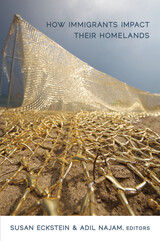
Just as trade, finance, information, and technologies are moving rapidly across borders, so too have labor markets and transnational migrant communities. Migrants are sending large quantities of money back to their countries of origin in the form of philanthropy, remittances, and commercial investments. They are also sharing knowledge and skills learned or developed abroad. Is greater global equity an inevitable consequence of such diaspora philanthropy, or can this giving actually aggravate inequity? Diasporas and Development examines the positive—and sometimes negative—impacts of diaspora engagement in Africa, Asia, Central America, and the Caribbean.
How can the equity impact of this global giving be maximized? Might creative intermediary mechanisms or public policies help channel diaspora philanthropy in positive directions? They also explore motivations for the dark sides of diaspora engagement such as support for extremist organizations, organized crime, ethnic violence, and even civil war. Diasporas and Development aims to deepen the understanding of the promise and pitfalls of diaspora philanthropy and how it might help bridge the distances between societies in an unequal world.

Contributors. Victor Agadjanian, Boaventura Cau, José Miguel Cruz, Susan Eva Eckstein, Kyle Eischen, David Scott FitzGerald, Natasha Iskander, Riva Kastoryano, Cecilia Menjívar, Adil Najam, Rhacel Salazar Parreñas, Alejandro Portes, Min Ye

Portrait of a Giving Community is based on a nationwide survey of the giving habits of Pakistani-Americans. This study, the first of its kind, not only examines the history, demography, and institutional geography of Pakistani-Americans but also looks at how this immigrant community manages its multiple identities through charitable giving and volunteering. It provides a snapshot in time of a generous and giving community whose philanthropy has become increasingly “American” without being less “Pakistani.”
Who are the Pakistani-Americans? What is the extent of their diaspora giving to Pakistan? What can be done to increase and channel their philanthropy for more equitable development in Pakistan? How much do they give within the U.S. and to causes unrelated to Pakistan? How does this community manage the hyphen in “Pakistani-American”? These are some of the questions that motivate this book.
READERS
Browse our collection.
PUBLISHERS
See BiblioVault's publisher services.
STUDENT SERVICES
Files for college accessibility offices.
UChicago Accessibility Resources
home | accessibility | search | about | contact us
BiblioVault ® 2001 - 2024
The University of Chicago Press









